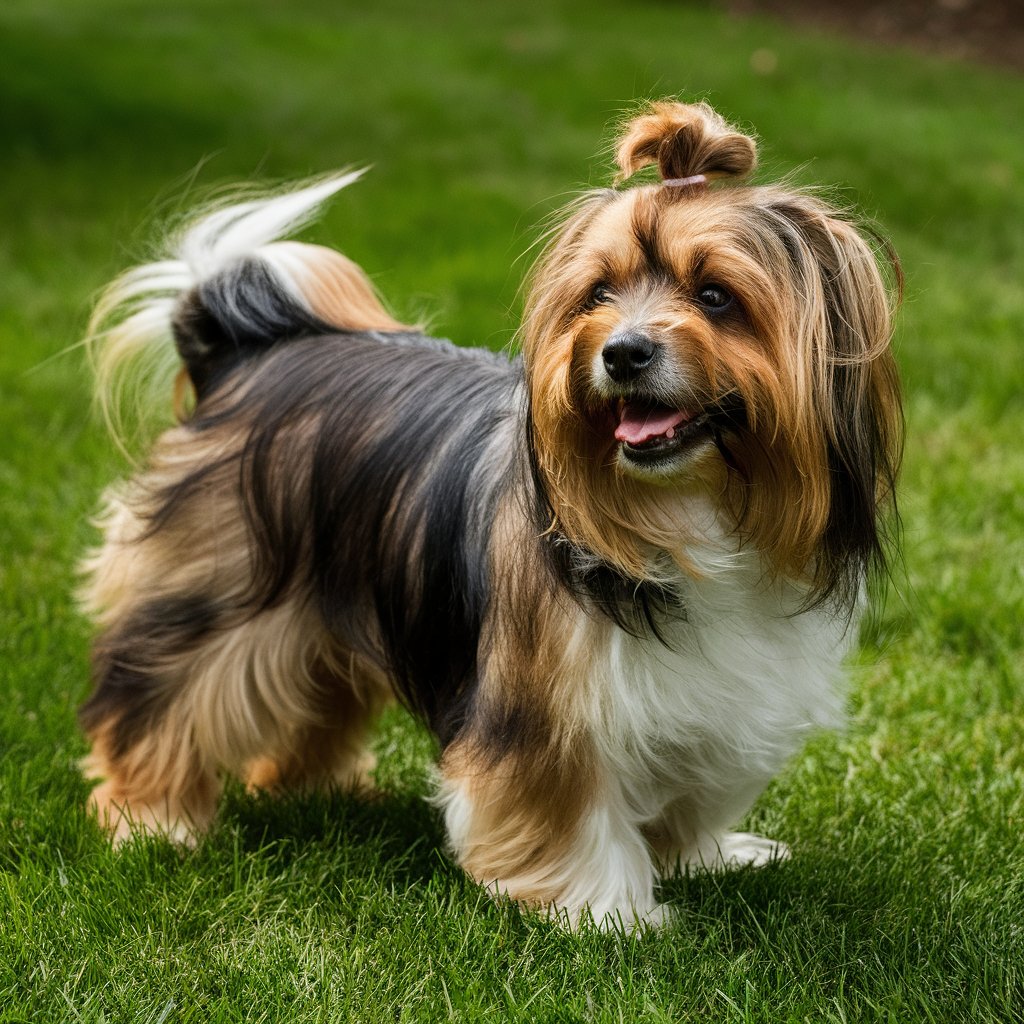Lhasa Apso: Your Essential Comprehensive Companion Guide
The Lhasa Apso, a small yet resilient breed with a storied history, captures the hearts of dog lovers worldwide. Known for their distinctive appearance, independent spirit, and affectionate nature, Lhasa Apsos have been cherished companions for centuries. In this comprehensive guide, we will delve into the history, characteristics, grooming needs, health considerations, and share personal anecdotes to provide an in-depth understanding of this captivating breed.
History and Origin

The Lhasa Apso hails from Tibet, where they were bred as sentinel dogs in monasteries and homes of Tibetan nobility. Revered for their keen senses and alert nature, Lhasa Apsos served as watchdogs, alerting their owners to intruders with their distinctive bark. Their name “Apso” is Tibetan for “bearded,” reflecting their luxurious facial hair.
The breed’s origin dates back thousands of years, and they are considered one of the oldest known breeds. Lhasa Apsos were highly valued and often given as gifts to visiting dignitaries, reinforcing their status as symbols of good luck and protection.
Characteristics and Temperament
Physical Appearance
Lhasa Apsos are small dogs with a sturdy build, typically weighing between 12 to 18 pounds and standing around 10 to 11 inches tall at the shoulder. They have a long, flowing double coat that requires regular grooming to maintain its health and beauty. Their expressive eyes and distinctive facial features give them a dignified and alert expression.
Personality
Lhasa Apsos are known for their independent and assertive personalities. Despite their small size, they possess a confident demeanor and are not shy about expressing their opinions. They are loyal and affectionate with their families but can be wary of strangers. Early socialization is crucial to help them feel comfortable in various situations and with different people and animals.
Grooming and Maintenance
Coat Care
The luxurious coat of a Lhasa Apso requires regular grooming to prevent matting and maintain its luster. Daily brushing is recommended to remove tangles and debris, especially around the ears and hindquarters where matting tends to occur. Bathing should be done every three to four weeks using a gentle dog shampoo to keep the coat clean without drying out the skin.
Professional Grooming
Many Lhasa Apso owners opt for professional grooming services to keep their dog’s coat in top condition. Professional groomers can trim the coat to a manageable length and style it according to breed standards or personal preference. They can also perform tasks such as nail trimming, ear cleaning, and teeth brushing to ensure overall grooming and hygiene.
Exercise and Activity
Despite their regal appearance, Lhasa Apsos are active dogs that require regular exercise to stay healthy and happy. Daily walks, playtime, and mental stimulation are essential to prevent boredom and ensure their well-being. They enjoy activities like fetch, interactive toys, and short training sessions that challenge their minds and bodies.
Health Considerations
Common Health Issues

Lhasa Apsos are generally healthy dogs, but like all breeds, they are prone to certain health conditions. Some of the common issues include:
- Patellar Luxation: This condition occurs when the kneecap slips out of place, causing discomfort and potential lameness. Regular veterinary check-ups can help detect and manage this condition early.
- Progressive Retinal Atrophy (PRA): PRA is a degenerative eye disorder that can lead to vision loss over time. Regular eye exams are essential to monitor for early signs of PRA and other eye problems.
- Allergies: Lhasa Apsos can be prone to allergies, including food allergies and skin allergies. Identifying and avoiding triggers, such as certain foods or environmental allergens, can help manage these issues effectively.
- Dental Problems: Small breed dogs like Lhasa Apsos are susceptible to dental issues such as tartar buildup and gum disease. Regular brushing and dental check-ups are important for maintaining oral health.
Preventive Care
Routine veterinary visits, a balanced diet, regular exercise, and preventive measures are essential for maintaining the health and well-being of a Lhasa Apso. Vaccinations, parasite prevention, and dental care should be part of their regular healthcare routine. Owners should also monitor their dog’s weight, diet, and behavior for any changes that may indicate a health problem.
Personal Anecdote: Life with a Lhasa Apso
Let me share a personal story about my experience with my Lhasa Apso, Charlie. Charlie came into our lives as a playful and affectionate puppy, instantly melting our hearts with his expressive eyes and fluffy coat.
One of the most memorable moments with Charlie was during a family camping trip. Despite his small size, he embraced the outdoor adventure with enthusiasm. He would explore the campsite, alerting us to any unfamiliar sounds with his sharp bark. At night, he would curl up next to us by the campfire, content and watchful.
Grooming Charlie was a bonding experience for us. His silky coat required regular brushing, which he enjoyed as a relaxing massage. He would sit patiently, occasionally giving me a playful lick on the hand to show his appreciation. Visits to the groomer were also a treat for Charlie, who loved the attention and pampering.
Charlie’s loyalty and affection were unwavering. He had a knack for sensing when someone in the family needed comfort and would snuggle up close, offering silent companionship. His playful antics brought joy and laughter to our home, reminding us daily of the special bond we shared.
Training Tips
Training a Lhasa Apso requires patience, consistency, and positive reinforcement. Here are some tips to help with training:
- Start Early: Begin training and socialization early to establish good habits and prevent behavioral issues. Expose your Lhasa Apso to different environments, people, and animals to help them become well-rounded and confident.
- Positive Reinforcement: Use treats, praise, and play to reward good behavior. Lhasa Apsos respond well to positive reinforcement and will thrive in a loving and supportive environment.
- Consistency: Be consistent with commands and rules. This helps your Lhasa Apso understand what is expected of them and reduces confusion.
- Patience: Training a Lhasa Apso can take time, especially with housebreaking and overcoming stubborn behaviors. Stay patient and avoid punishment-based training methods, which can undermine trust and confidence.
- Socialization: Introduce your Lhasa Apso to new experiences gradually and positively. This helps them feel comfortable and confident in different situations.

Conclusion
The Lhasa Apso is a captivating breed with a rich history, distinctive appearance, and loving temperament. They make loyal and affectionate companions, bringing joy and companionship to their families. While owning a Lhasa Apso requires commitment, particularly in terms of grooming and healthcare, the rewards of their companionship are immeasurable.
Whether you are considering adding a Lhasa Apso to your household or are simply fascinated by this ancient breed, there is no denying their unique charm and presence. Their regal bearing, combined with their loving nature and independent spirit, make them cherished members of any family.





